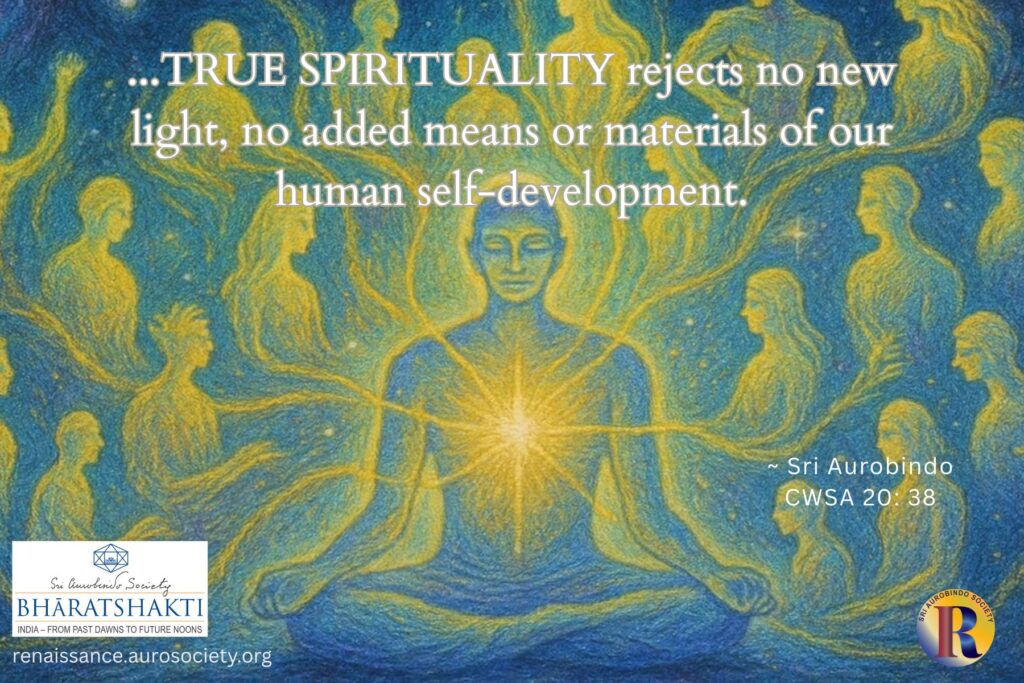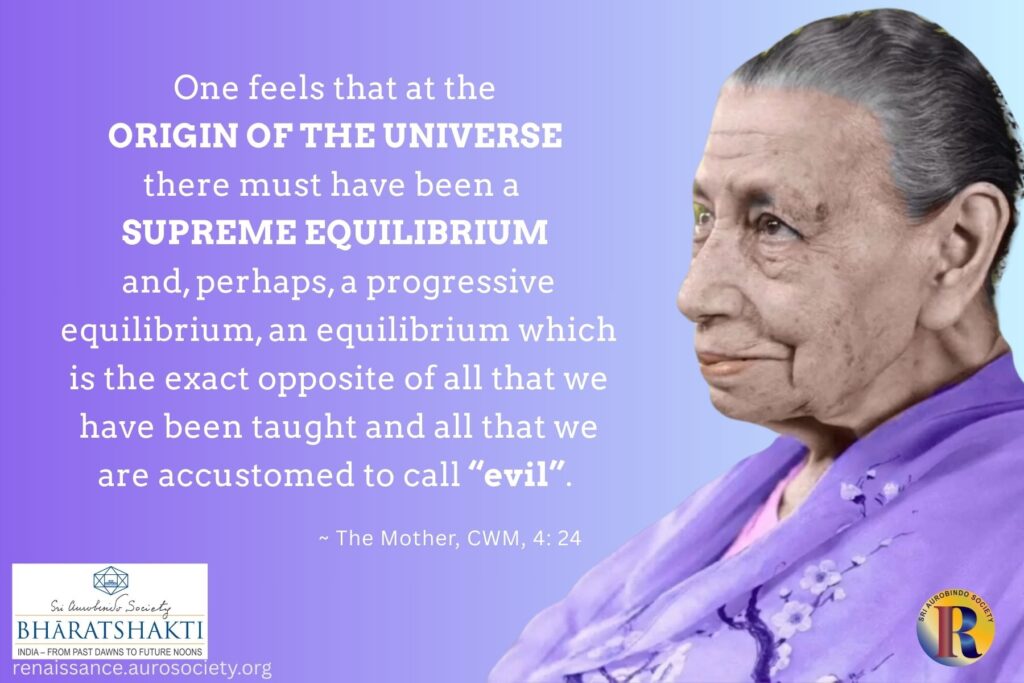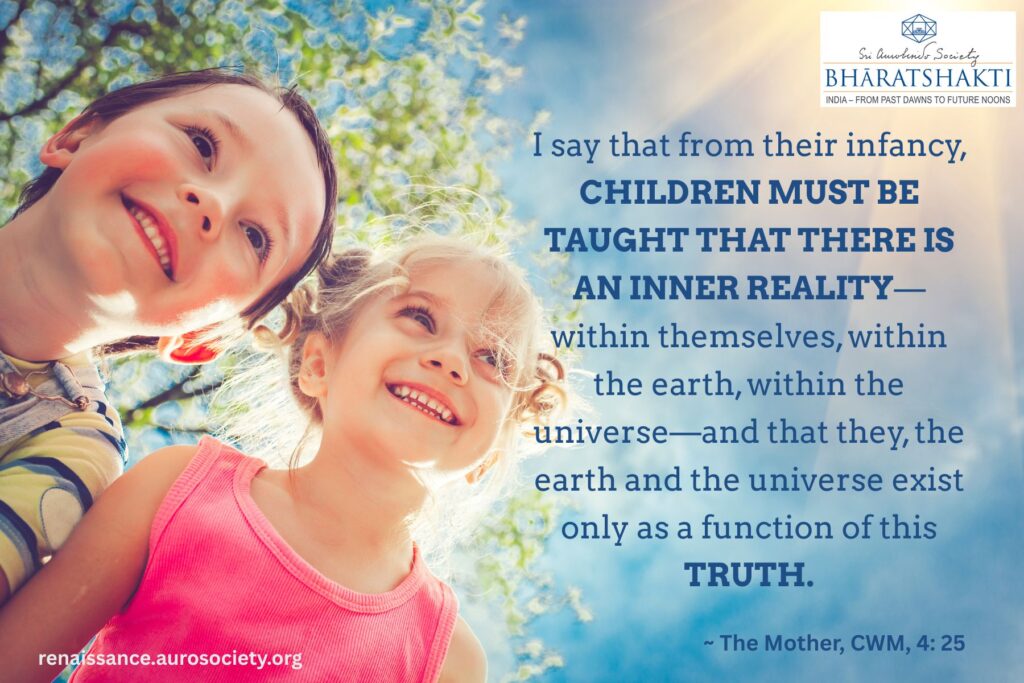Volume III, Issue 10
Author: Pavitra P.B. Saint-Hilaire
Editor’s Note: We feature an excerpt from a long essay titled “Two Cardinal Points of Education” by P.B. Saint Hilaire, who was given the name Pavitra by Sri Aurobindo. The essay was first presented as ‘A collective memorandum’ on behalf of Sri Aurobindo International Centre of Education (SAICE) to the Education Commission, Government of India in 1965. It was later included in Pavitra’s book ‘Education and the Aim of Human Life’ published by SAICE, Pondicherry.
The following excerpts are taken from the book’s revised edition of 1991, pp. 155-176. We have made a few minor editorial and formatting corrections including updating of the citations from various works of Sri Aurobindo and the Mother.

First principle: Nothing can be taught
In the right view of things the true purpose of education is not only to bring out of the child the best and the noblest that he is capable of, but also to endow him with an understanding of the true aim and significance of human life. This will provide him with a lasting source of inspiration when he enters and faces the world at the end of his academic training.
This second point needs all the more attention nowadays because of the uncertainty that surrounds even the most immediate future. We have reached a phase of accelerated scientific and technological progress that may lead to the liberation of man from want and to a considerable amount of well-being and security – what has been called an affluent society. But it may lead also to self-annihilation.
What is then coming next? Is mankind to be led blindly to wanton destruction or to a still worse soulless fate? Are there no truer and more deeply inspiring words of guidance for our young people than subtleties on the absurdity of life? How shall we counteract the effect of such lack of genuine guidance and help them to surmount the confusion in which so many flounder?
In this connection two points are of cardinal importance.
- The first springs from a true insight into human nature and constitution. And this will determine the attitude that the teacher should take towards the growing child.
- The second concerns the future of man, of man the individual and humanity the collective man.
Modern education, on the whole, takes the child as an undeveloped body endowed with a young life, untrained sensibilities, acute but often unrestrained emotions, an immature mind and, as he grows, a nascent and groping reason.
* * *
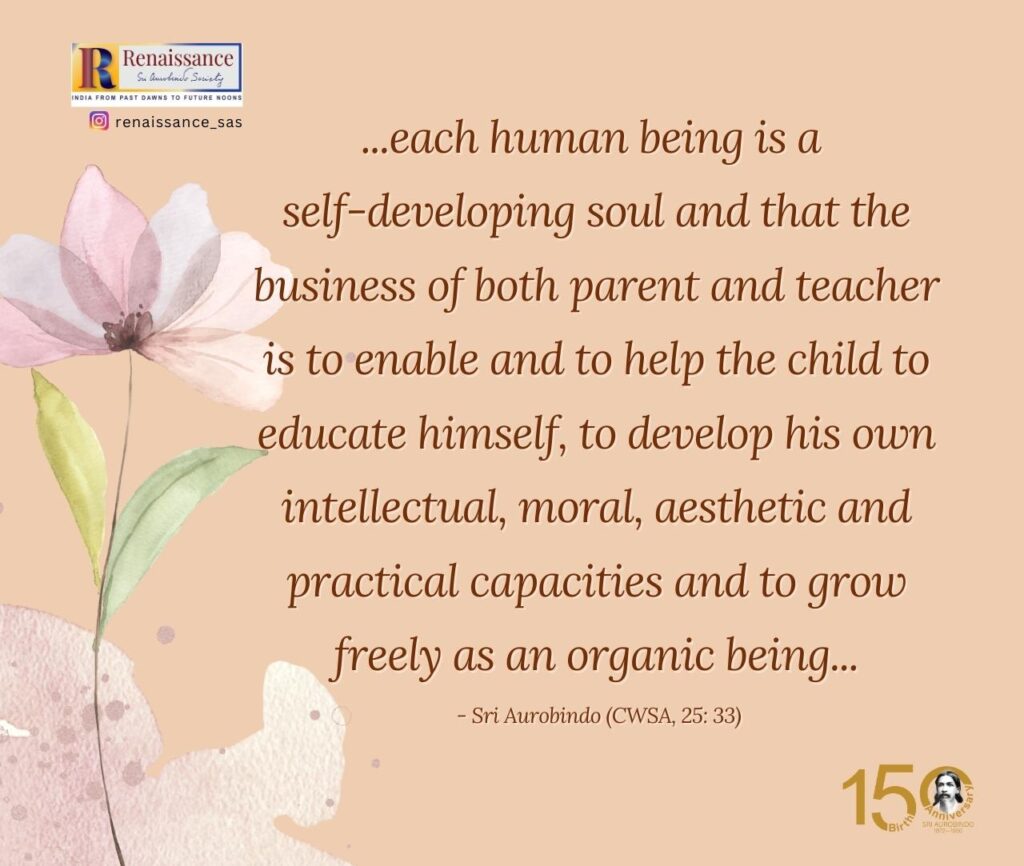
Reason is the highest recognized faculty. And to make of the full-grown child a being governed by reason and capable of discrimination and rational thinking, with a healthy and strong body, a sensitive but chastened emotional and aesthetic being, well trained in the conventional morality and customs of the present-day social life, will appear to many educationists an ideal achievement so far as the individual child is concerned.
But society has its word to say. It requires a regular supply of young men and women, immediately serviceable for its complicated economic, administrative and industrial machinery and therefore demands that they should be classified according to ability and capacity.
In the process of training, the child is submitted to the powerful (for his delicate and impressionable nature) influence of parents, teachers and school-mates. Moreover, the requirements of society to some extent run counter to the innate urge of the child. Thus the best of which the child would have been capable does not realize itself fully – far from it.
The defects of modern education are well known.
They have often been described and analysed. But the remedies that have been proposed are mere palliatives. They counter the effects and not the cause. If we want to find a genuine solution to the present difficulties, we have to discover the cause of the evil and for that to re-examine the whole foundation on which education rests.
As early as 1910 when he was a political leader in Bengal, Sri Aurobindo propounded certain principles of education. At that time they were truly revolutionary as they broke away deliberately from the conventional notions on education that were then prevalent under the foreign domination.
These principles, of which I quote here below the first one, most important and sufficient for my present purpose, did not seem to have attracted the attention they deserve. And they remain even today practically unknown to the educational world.
* * *
The first principle of true teaching is that nothing can be taught. The teacher is not an instructor or taskmaster, he is a helper and guide. His business is to suggest and not to impose. He does not actually train the pupil’s mind, he only shows him how to perfect his instruments of knowledge and helps and encourages him in the process.
He does not impart knowledge to him, he shows him how to acquire knowledge for himself. He does not call forth the knowledge that is within; he only shows him where it lies and how it can be habituated to rise to the surface.
The distinction that reserves this principle for the teaching of adolescent and adult minds and denies its application to the child, is a conservative and unintelligent doctrine. Child or man, boy or girl, there is only one sound principle of good teaching. Difference of age only serves to diminish or increase the amount of help and guidance necessary; it does not change its nature.
~ Sri Aurobindo, CWSA, Vol. 1, p. 384
Read:
A Teacher has to be a Yogi
Awaken the child to the inner guidance
Since the beginning of the [20th] century, the educationists have been devoting themselves, especially in the West, to initiating and carrying out a considerable amount of theoretical and experimental research work in the field of education and child psychology. And they have come to conclusions similar to those expressed so forcefully by Sri Aurobindo.
For them the child is foremost a developing being who has its own needs, different from an adult’s and for that reason easily misunderstood by the adult. The first task of the educator is to make sure that the child’s needs are satisfied and that the child is happy. […]
* * *

Sri Aurobindo regards this new trend in western education as a healthy step. In The Human Cycle, he writes:
…there was a glimmering of the realisation that each human being is a self-developing soul and that the business of both parent and teacher is to enable and to help the child to educate himself, to develop his own intellectual, moral, aesthetic and practical capacities and to grow freely as an organic being, not to be kneaded and pressured into form like an inert plastic material.
It is not yet realised what this soul is or that the true secret, whether with child or man, is to help him to find his deeper self, the real psychic entity within. That, if we ever give it a chance to come forward, and still more if we call it into the foreground as ‘the leader of the march set in our front’, will itself take up most of the business of education out of our hands and develop the capacity of the psychological being towards a realisation of its potentialities of which our present mechanical view of life and man and external routine methods of dealing with them prevent us from having any experience or forming any conception.
These new educational methods are on the straight way to this truer dealing. The closer touch attempted with the psychical entity behind the vital and physical mentality and an increasing reliance on its possibilities must lead to the ultimate discovery that man is inwardly a soul and a conscious power of the Divine and that the evocation of this real man within is the right object of education and indeed of all human life if it would find and live according to the hidden Truth and deepest law of its own being.
– Sri Aurobindo, CWSA Vol. 25, p. 33
* * *
How this is to be brought about is mainly a matter of tactful dealing with the child. Of course, there must be a great freedom in the choice of the subjects, in the time allotted to each subject, so that the child can progress at his own pace. This last result calls for individual handling and a sufficient knowledge of the language by the child so as to be able to read and comprehend.
Text-books are usually too condensed, therefore work on files or work-sheets is preferable. But their preparation imposes a heavy burden on the teacher. Anyhow a real Free Progress Class – as these classes may be called – can only begin when the child is able to read and write fairly well, i.e., in Class IV or V.
Before that level, the teacher has to use his own discretion. But the right attitude towards the child must be adopted from the very beginning, in the Kindergarten.
Read:
A True Education for India’s Future: Words of the Mother
A child’s soul is usually very close to the surface and, if a proper environment is maintained, it will continue to be so for several years.
Ordinary education and the influence of adult society usually act to muffle and distort this happy and healthy spontaneity, and replace it by an automatism based on the more or less arbitrary conventions of family and society and no less arbitrary rules of moral or religious education.
In order to awaken the child to the understanding of the relations existing between… the inner and the outer [worlds], he should be told how to observe carefully what happens in himself. He has to be shown that he is the playground, sometimes the battlefield of different forces and inner movements: sensations, impulses, emotions, ideas.
And he must be taught how to distinguish between them practically and find out their nature and origin. For this discovery intellectual explanations are insufficient. It is no use lecturing and moralizing. It is with concrete instances, from the day-to-day school life, taking advantage of apparently insignificant incidents, that the discrimination can be slowly developed.
The child will then be shown that it is possible to rise above the fleeting inner movements. And that he has now learnt to discriminate and not to be frightened by the inner silence in which he may enter. This silence will later reveal itself as a plenitude.
* * *
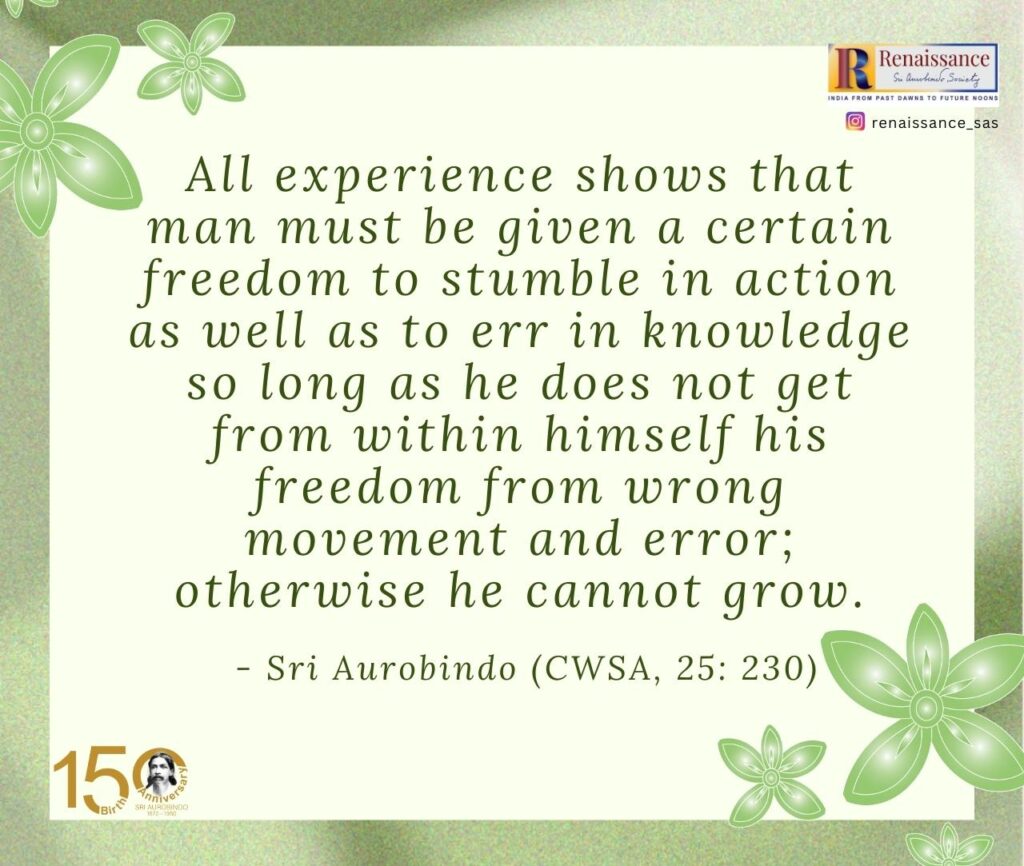
As an illustration, I shall give the case when a tense situation has somehow arisen and a decision has to be taken, or when an obstacle hampers all progress. At a suitable time, the teacher may call the child when alone. He will then present to the child impartially, in a few kind and simple words, the consequences of the possible alternatives. And then ask him to consider quietly the whole matter, and after a moment of silence, to aspire for light and truth.
Not by the mind and the reason, because truth does not depend on arguments, nor by the emotions — although restrained and purified emotions will greatly contribute to reaching a solution by their quietness — but in the freedom, impartiality and equality of the spirit, the teacher may succeed in imparting the little touch which, by its repetition, will awaken the still receptive young being to the presence of the inner divinity.
Continued in PART 2

~ Design: Raamkumar and Beloo Mehra

